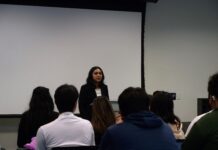
The newly-implemented online program UC Online provides more students with the option of taking general education classes through a University of California campus. Initially reserved for UC-enrolled students, the program became accessible to the public in early October. The UC system is hoping to target undergraduate classes that may be overcrowded. First introduced in January at UC Merced, the program has gradually expanded to eight other UC campuses, with the current enrollment of 1,700 undergraduates.
This fall, eight classes were offered, such as The Beauty and Joy of Computing (CS 10), Art, Science and Technology (DESMA 9) and Maps and Spatial Reasoning (Geog 12) throughout the UC system. There is only one available course at UCR, entitled Dance, Cultures and Contexts (Dance 7).
Classes are also available to non-UC students, though the selection is still limited to three courses. Courses must first be offered to UC students before becoming available to possible transfers, high-school students or “life-long learners.” Non-UC and UC students alike will receive college credit for their work but non-UC students are required to pay a fee based on an in-state tuition rates. Courses offered to students already enrolled into the UC system will be included within the tuition set.
UCR Registrar Bracken Dailey took part in the discussions and activities behind the launching of UC Online at UCR, where he explained the gradual process and evaluation that each course must undergo. “It has to go through the college and then our senate and they have to say ‘yes, okay, everything looks good,’” stated Dailey. “Then once it’s been approved at our campus, it has to go up to UCOP for the UC [Committee on Education Policy] to also approve it. And the UC online group has to approve it to be a UC Online course.” In the end, the course is still “governed” by each respective campus.
The one class that is offered so far at Riverside, Dance 7, is currently being taught by Jacqueline Shea Murphy, chair of the dance department and associate professor. She cited many reasons why online teaching is a necessary academic course. Crowded classrooms, the need for more student enrollment and the desire to be a part of a technological revolution were all motivations for Murphy to teach the course.
Professor Murphy also mentioned the frustrations that come with being part one of the first groups to try out the new technology. She joked that her students will “be telling their kids that ‘when I was in college I pioneered one of the first…online classes [for the UC].’” Though the technology is still being developed, she did add that her class did an “amazing” job on their last assignment using some of the online tools. “There’s probably…a little bit of anxiety and frustration getting to know the way an online class works…but I think [it’s also] amazing—stepping up to that plate.”
Some of the tools that Shea Murphy’s class uses include an EtherPad and Adobe Connect “discussion rooms.” With both individual and collaborative workloads, students are given the opportunity to work at their own pace. Students are free to listen to the lecture at any time, but there are designated online periods for discussion section.
“You really have to be on the ball, [an active learner] and… be little bit of a ‘self-starter’ or someone who is self-motivated to stay on track,” stated Murphy.








